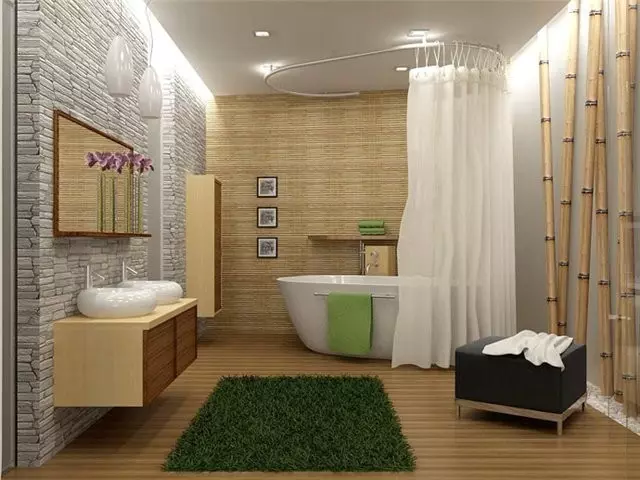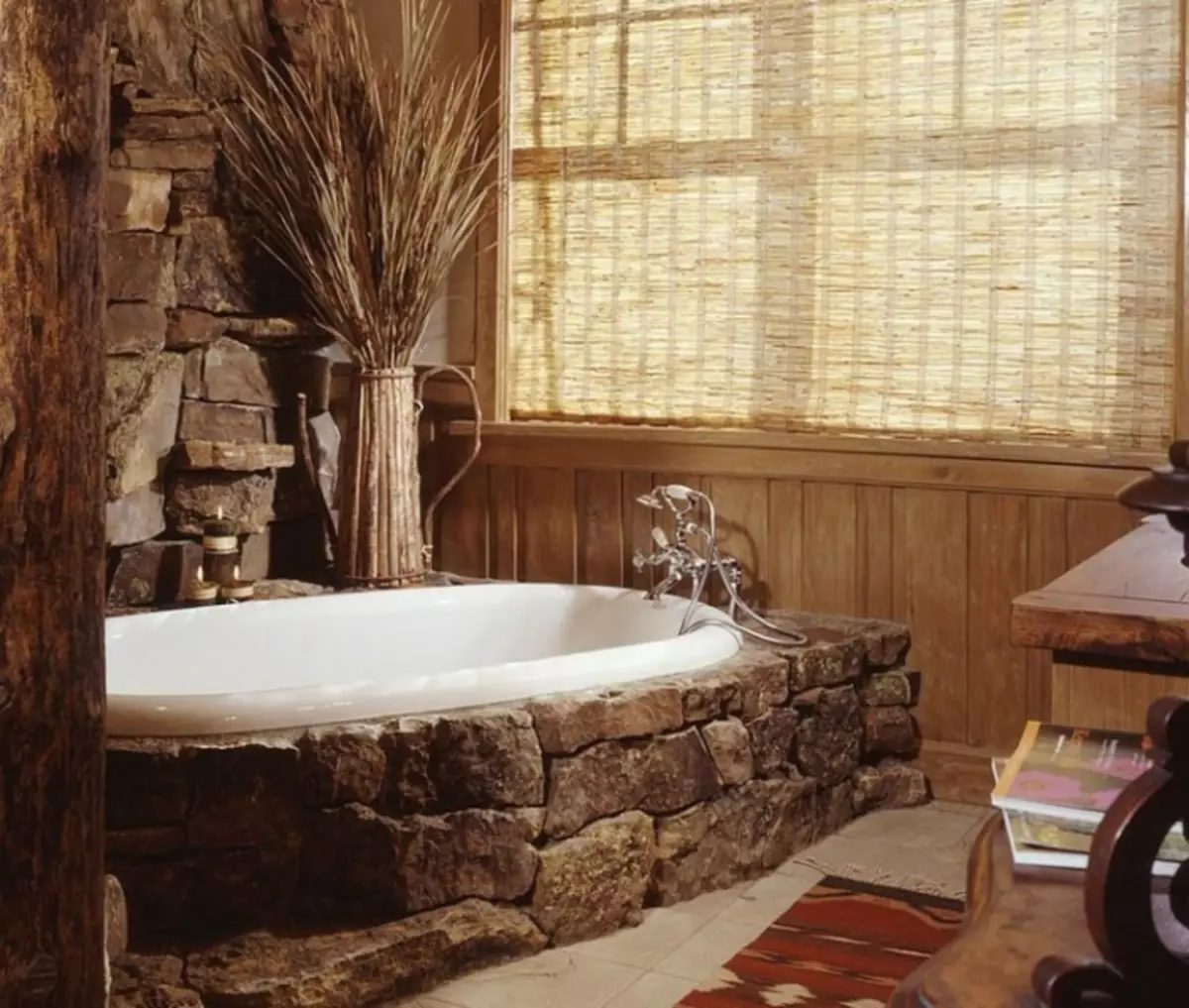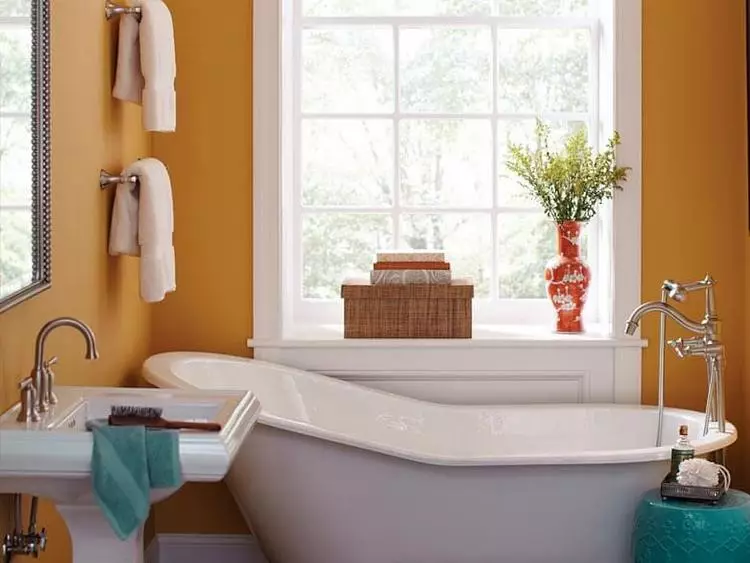
Bathroom finishing options: Alternative Tile
Approaching the repairs of the bathroom, not everyone believes that the only option of flooring and walls is a tile. There are several alternative options that, among other things, are able to save finances, as well as reduce the time on finishing work.
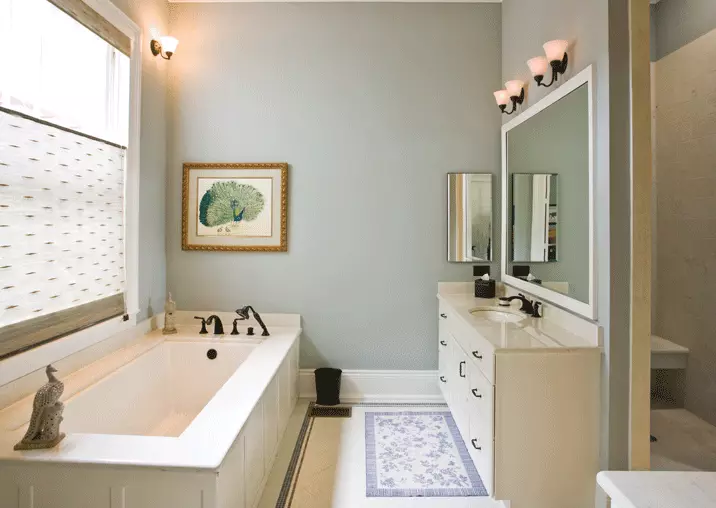
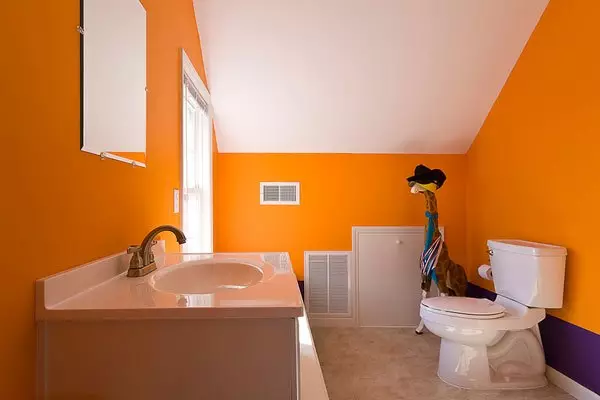
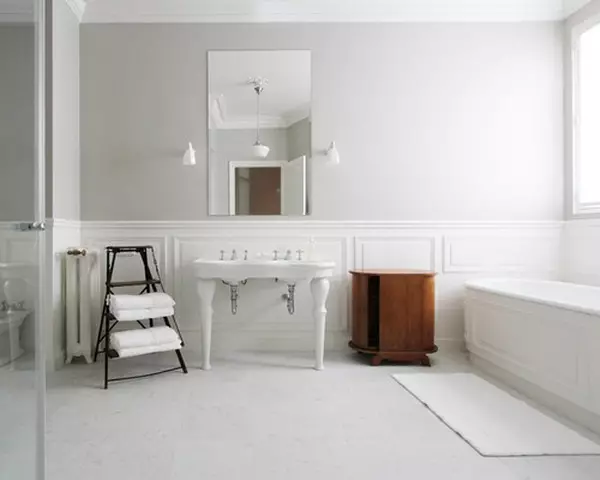
Wall decoration
Paint
An option that does not require any materials at all is paint. Manufacturers offer a lot of moisture-resistant paints that are suitable for the bathroom.
The advantages of such a solution are quite weighty:
- You can choose almost any color or several immediately;
- Paints differ in texture, can be glossy or matte, you can create different effects;
- For this method, it does not need high qualifications - paint the wall with a brush or roller can anyone;
- This is a fairly budget option - depending on the area of the room and the paint you choose, you can meet in modest money.
- Painting does not take much time - most likely work will be held in one day.

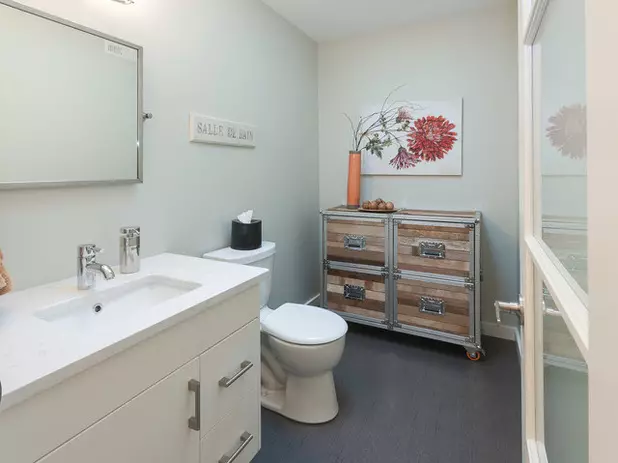
However, if you decide to paint the walls, and not only in the bathroom, then significant temporary, monetary and strength will require the preparation of the surface - walls.
To bring the walls to painting, it is necessary to clean them from the old coating, remove the old plaster, especially in those places where it "sits" to be loosely and align the walls again. There is another option to "sew" walls of plasterboard. The final result is covered with primer twice, after which you can paint.
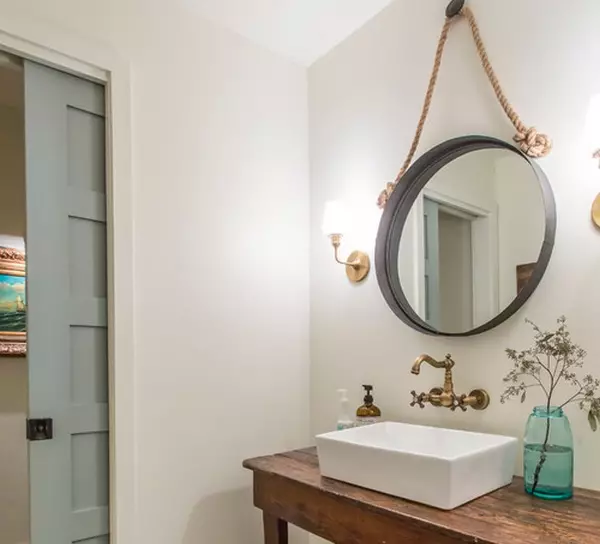
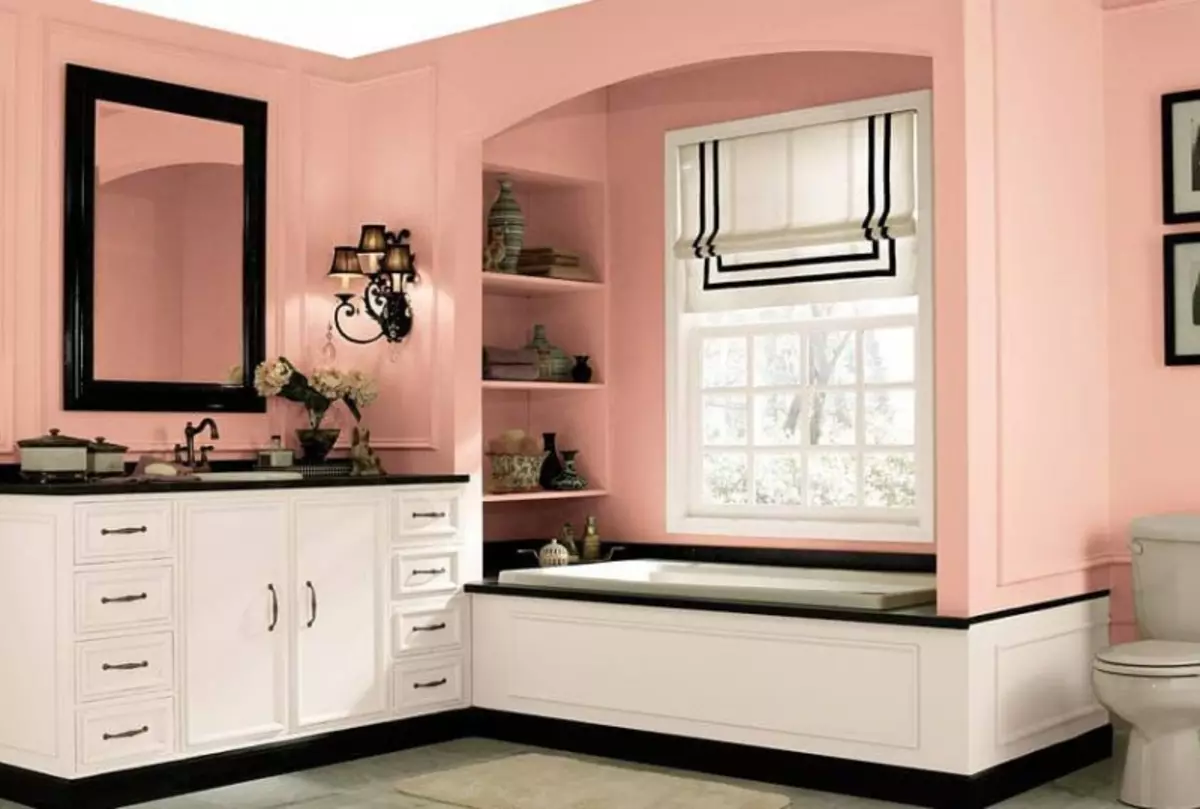
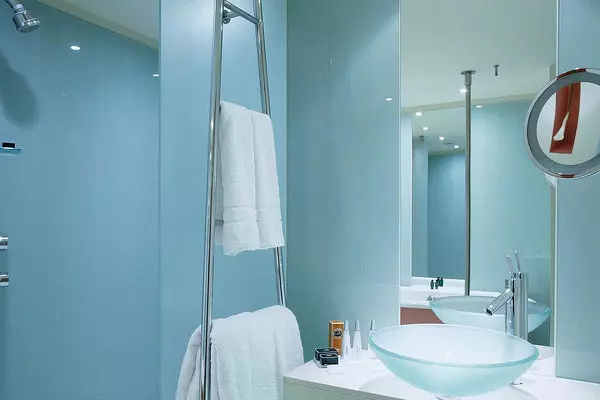
Plastic panels
Another option for the bathroom is plastic panels. They are resistant to moisture, create a smooth surface even on a non-ideal wall, have a huge number of color solutions. As a rule, one PVC panel is several times more than the square of the tiled handkerchief, which means that the installation will pass faster.
Article on the topic: Which Wallpaper Select for the Hall: Tips and 35 photos
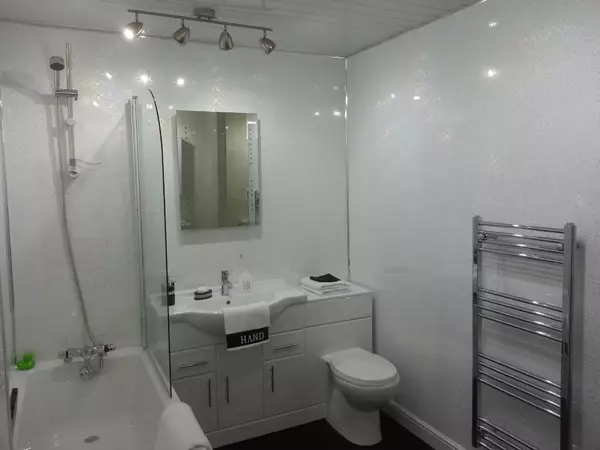
Plastic panels are fixed either on liquid nails, straight to the wall. Note that if in the bathroom there is an old tiled handker, which has lost its attractiveness, but still well holds and done "on conscience", the panels can be glued right on top of it. Another fastening option is on the frame. If the walls are not flat, but the frame of the aluminum profile, protruding for a couple of centimeters, will correct the picture, and mount the panel easily and simply.
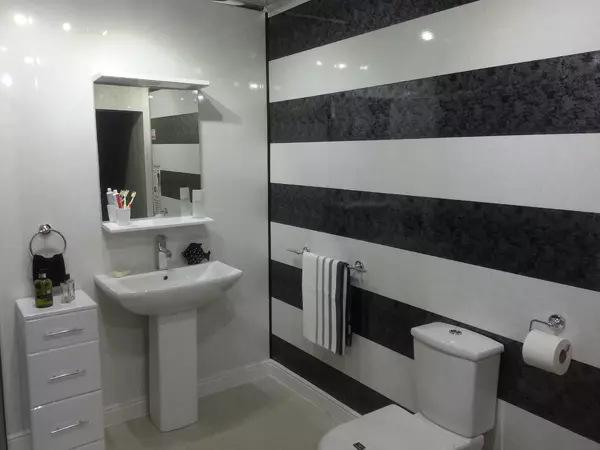
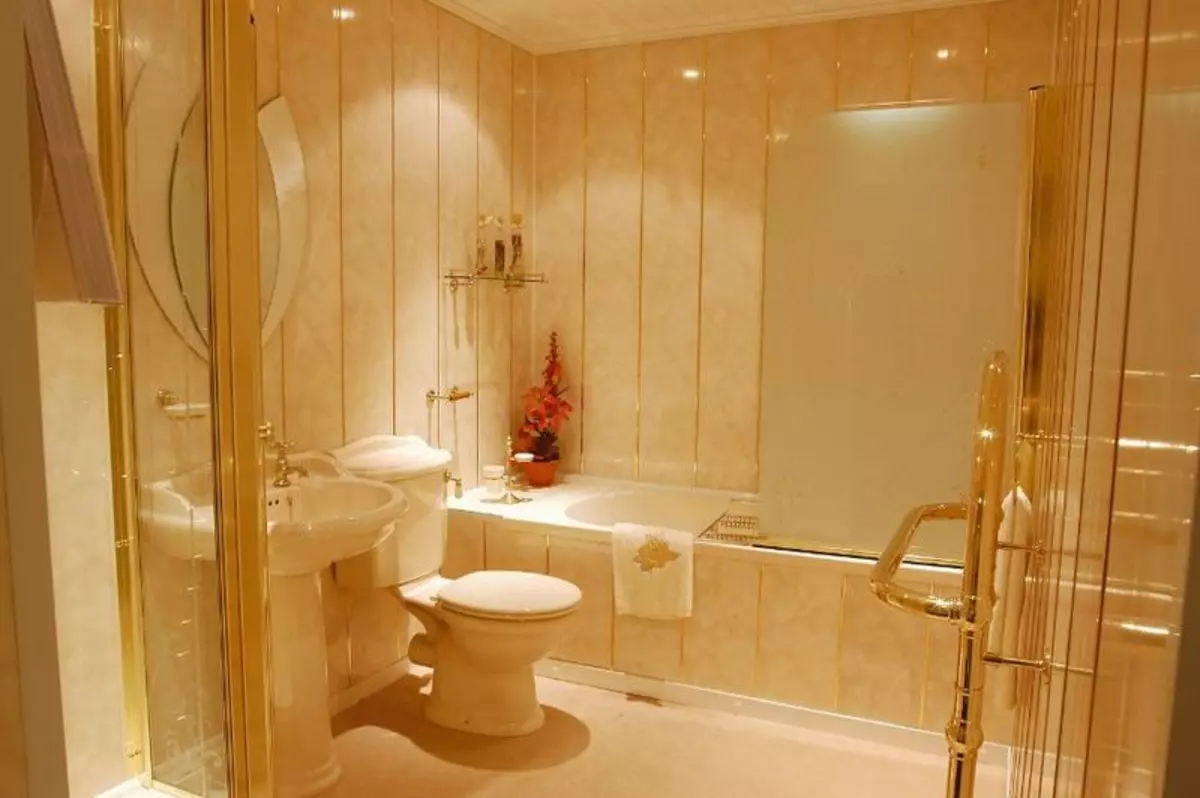
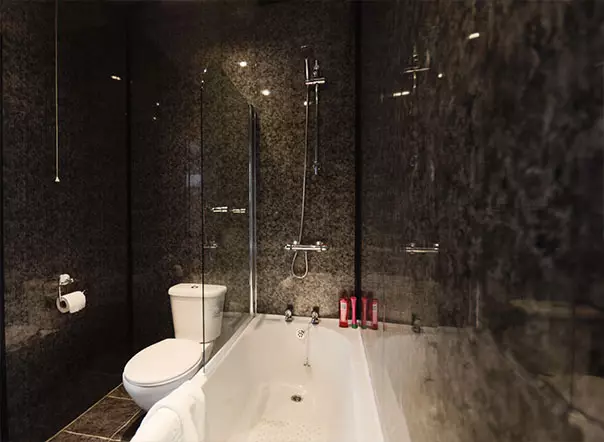
Moisture-resistant wallpaper
The following option is moisture-resistant wallpapers. They are produced by many brands producing "Wall Clothes". However, it is better to use the wallpaper in the bathrooms, the area of which allows you to "unfold." So, beautiful wallpapers can decorate those zones that water does not directly fall. Walls adjacent to the sink and bath, nevertheless, separate something more loyal to moisture.
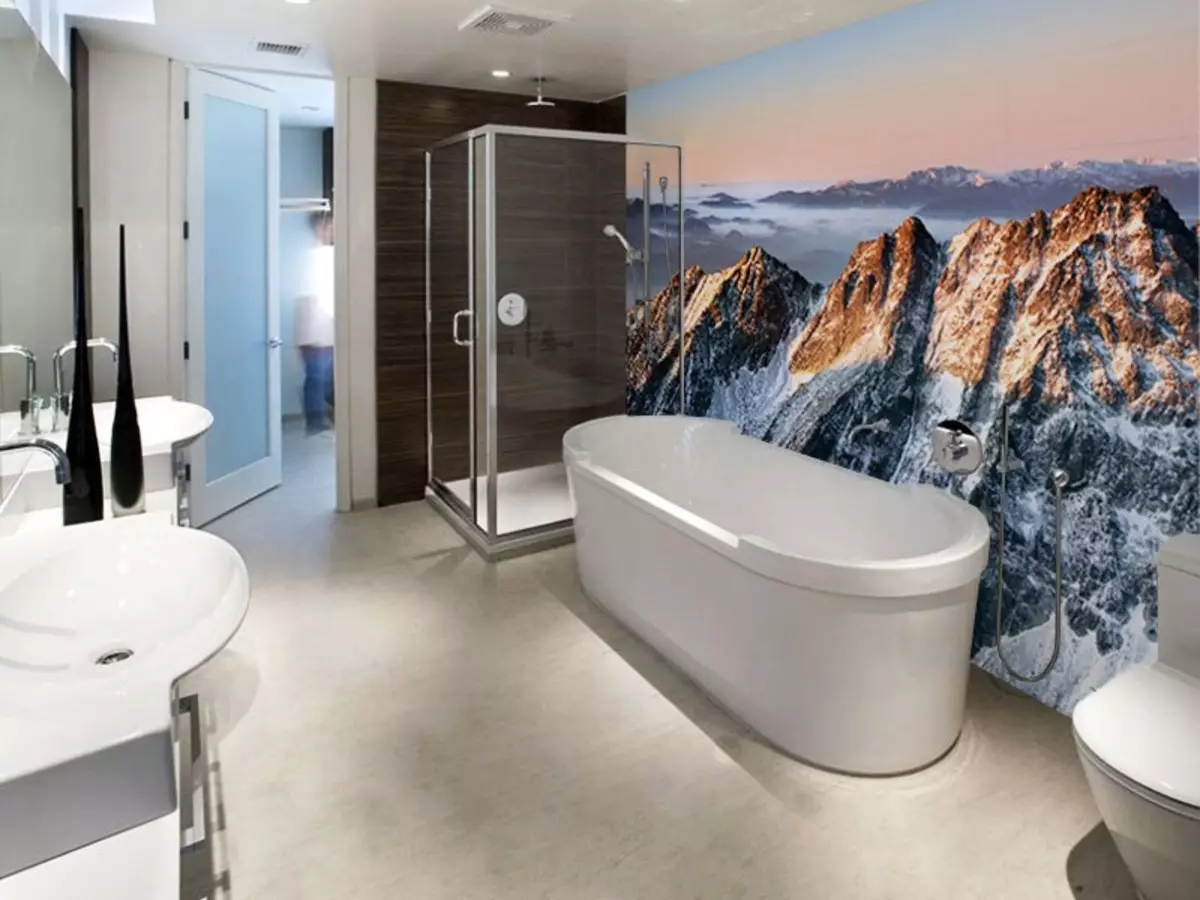
Despite the fact that wallpaper are labeled "suitable for the bathroom", based on their paper, although impregnated with special substances. Therefore, for a long time the wallpapers in the bathroom should not count on - over time they can come off.
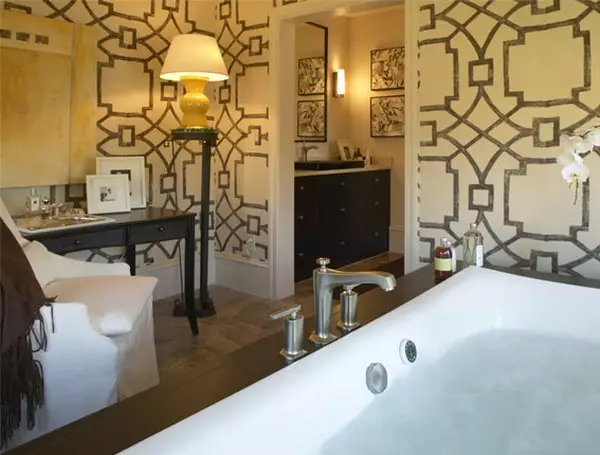
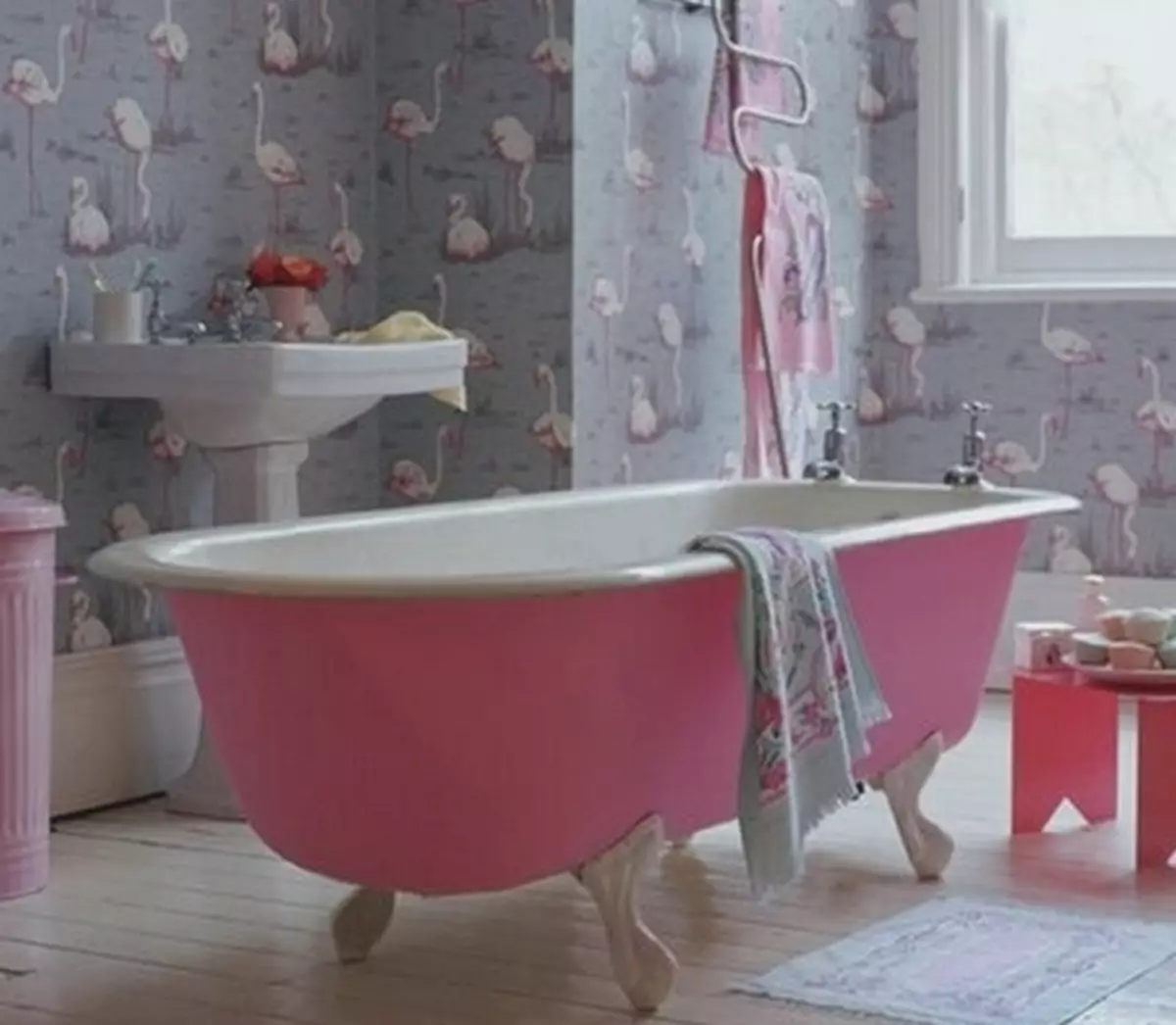
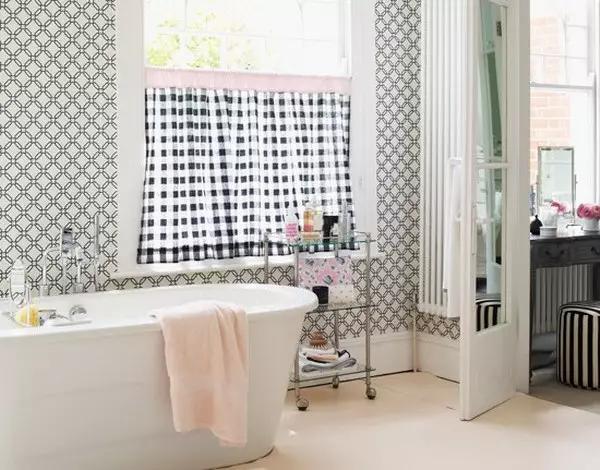
Decorative plaster
In the bathroom it will be appropriate to look at decorative plaster, If this material is protected by moisture-resistant varnish. In the building materials market there are a lot of options for such a decor: different textures and color, such plasters can perform "solo" or become a partner for any type of finishing described above.
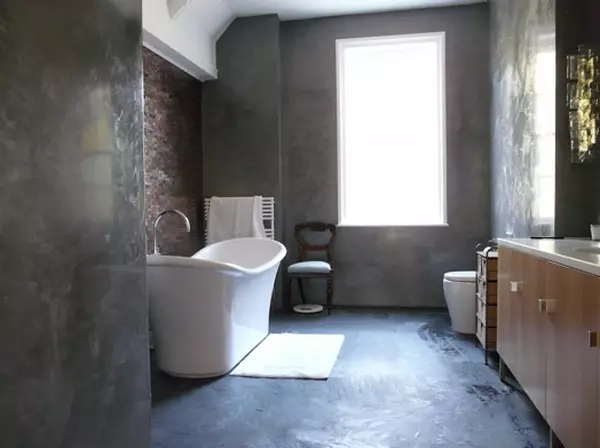
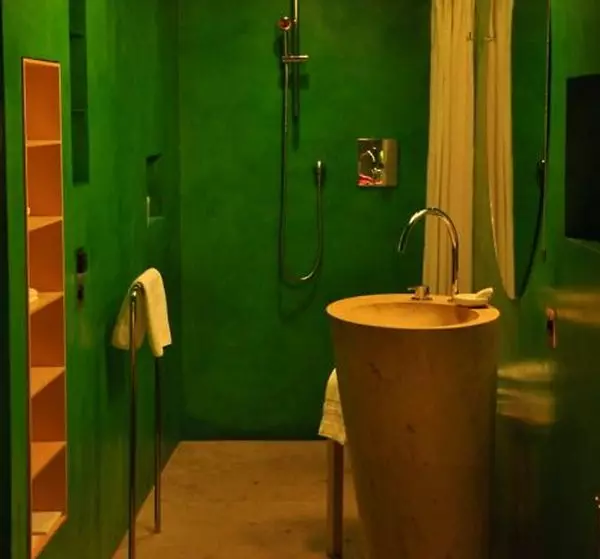
Flooring
Linoleum
When you were determined than to separate the walls, you can transfer your attention to the floor. Here, admit, alternatives to tile not so much, but it is. First of all, Linoleum will with success as an outdoor coating for the bathroom.
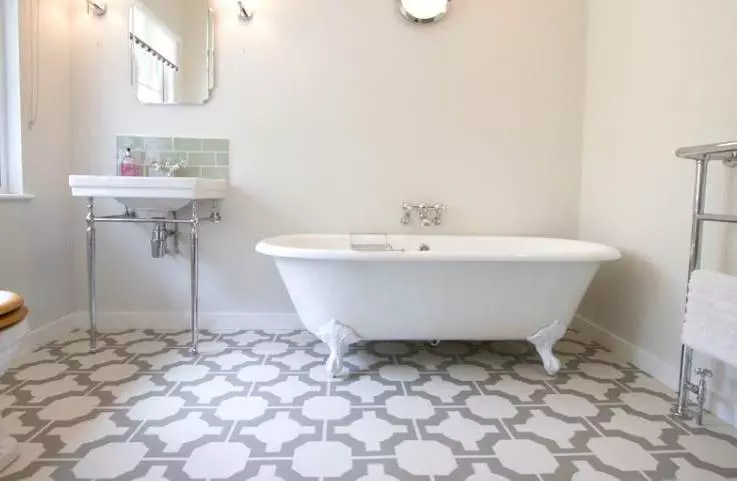
The main thing is to choose the linoleum of the corresponding class - in this case, you need a Class 21-23 coating suitable for residential premises. Next, it is necessary to consider the properties of the linoleum.
Article on the topic: How to mount the curtains to the ceiling eternity
The following requirements are nominated for the bathroom:
- Low sliding coefficient in order not to be injured on the wet floor;
- The ability to create sealed joints by welding or gluing;
- The minimum porosity of the base so that it does not absorb moisture;
- High moisture resistance and wear resistance of the upper layer.
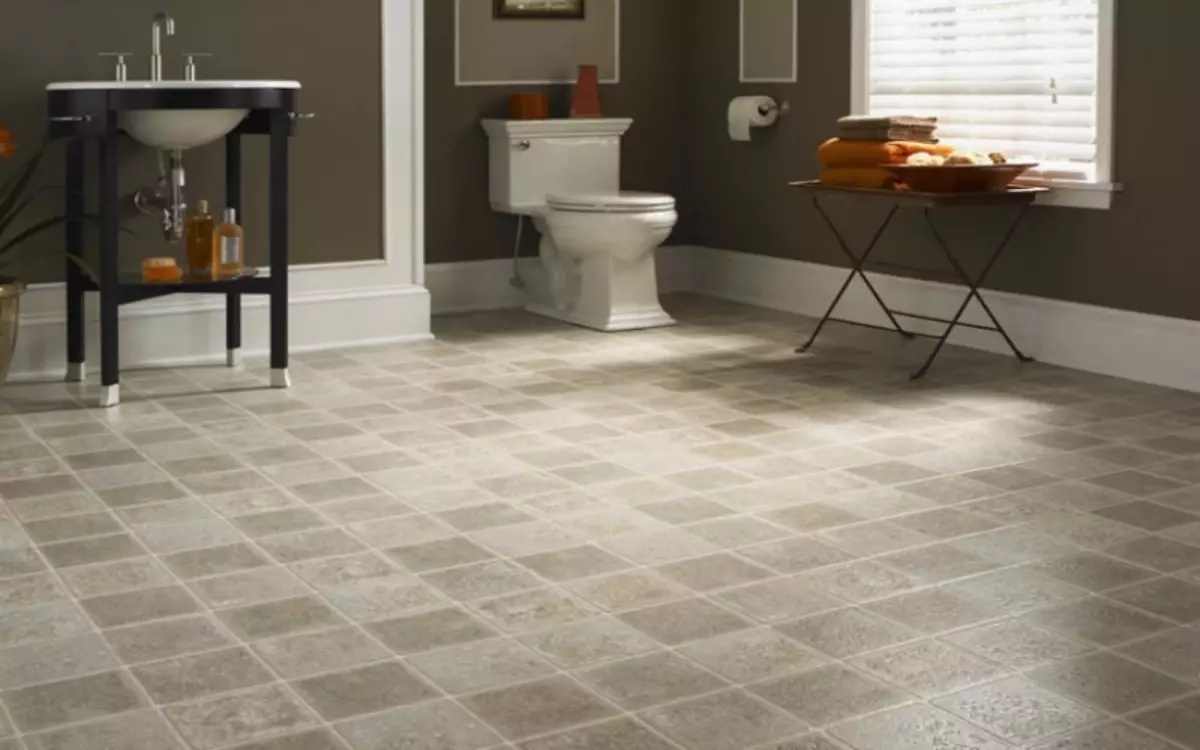
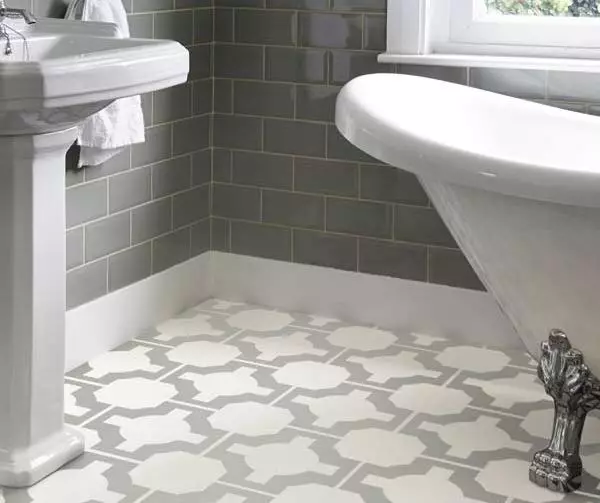
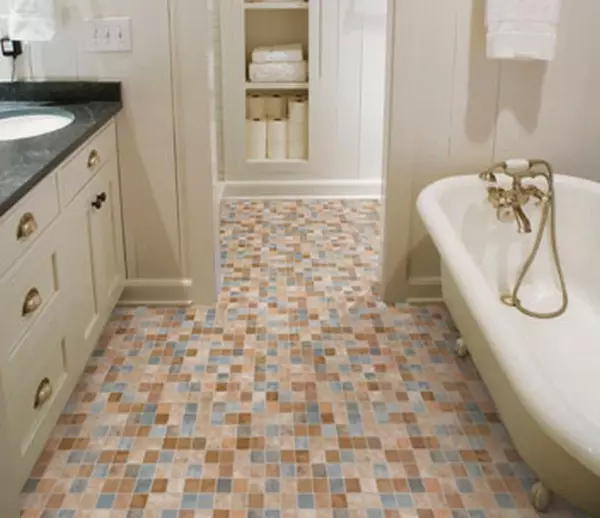
Laying linoleum implies that the room will not be furniture and the bath itself, otherwise the material will have to cut and "customize" under the legs and other protrusions. If there is an opportunity to put a linoleum solid piece, then the work will not take a long time - the material must be given time to fly and straighten up, then it is fixed by plinths.
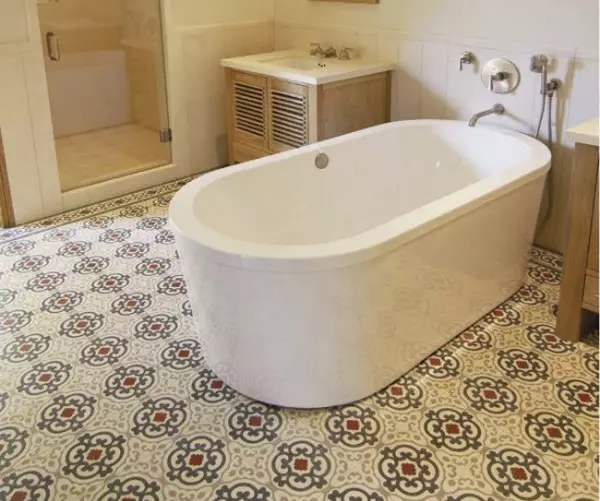
Moisture-resistant laminate
Another option of flooring in the bathroom is moisture-proof laminate. Unlike the usual, it perfectly holds moisture on the surface and is not deformed, and its layers are firmly pronounced among themselves, which eliminates the decrease in water.
In the laying of such a coating there are nuances, first of all, this is the choice of a special sealing glue, which will protect the junction of the laminate.
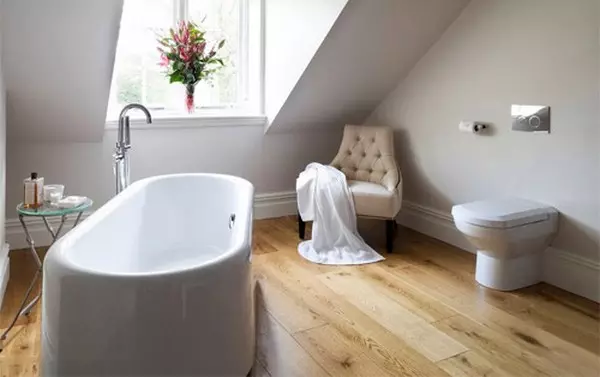
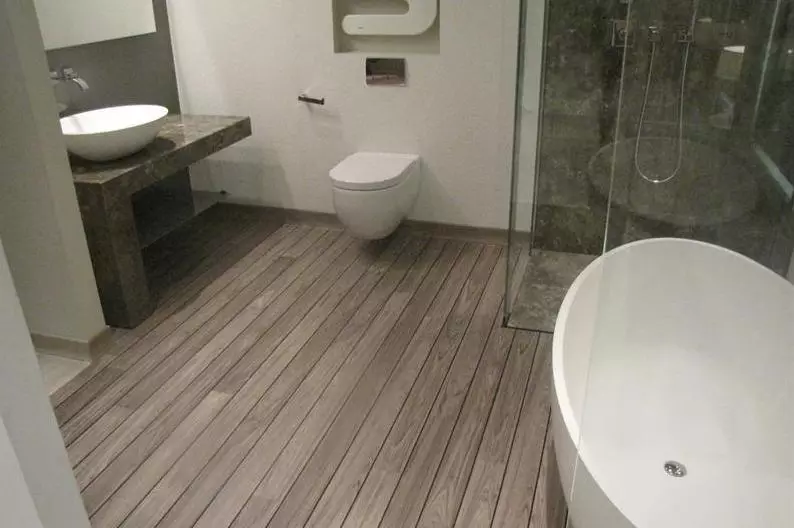
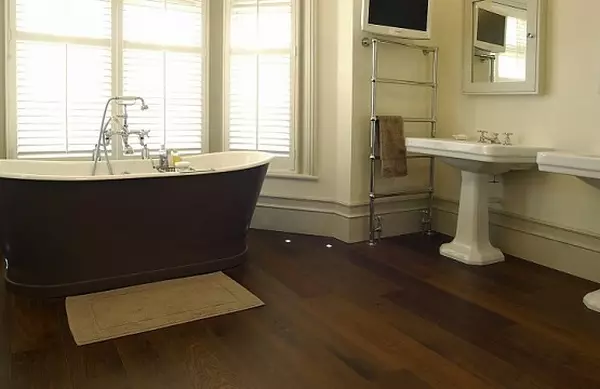
Another important point is the selection of the substrate, which should also meet the requirements of moisture resistance. The rest of the laminate laminate in the bathroom does not differ from the usual process in any other room.
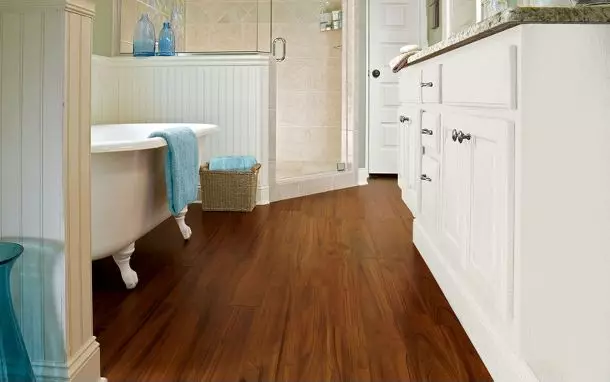
Examples
In this interior, not marble slabs are used, but the usual PVC panels. Due to the shape and pattern, imitating marble, as well as the competent layout on the walls, the plastic panels create an excellent imitation of a living stone, while remaining a budget and simple option for repairing the bathroom.
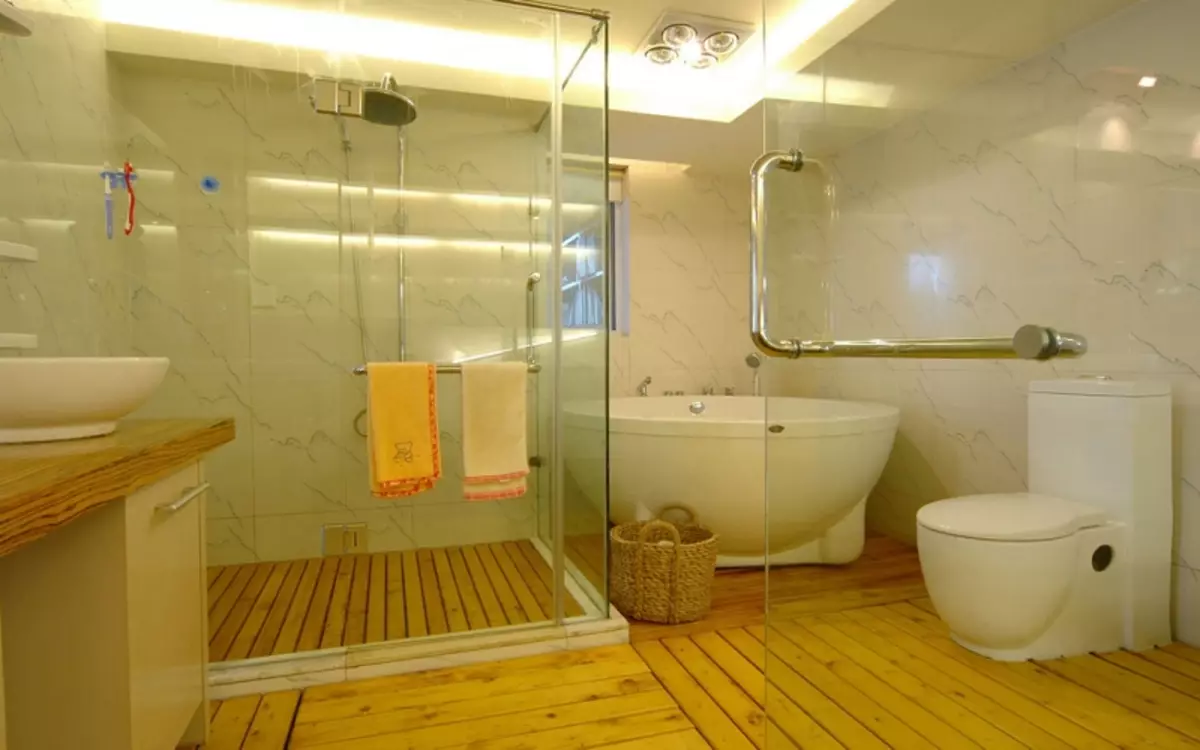
This is a great option to "settle" in the bathroom wallpaper. Here wallpapers are the only part of the wall, which is located at the window, contrasting with a calm color of other walls. However, do not forget that this option is good if your bathroom has a good air flow or ventilation so that the wallpaper is not in dampness.
Article on the topic: How to paint the walls in the bathroom instead of tile and how to update the cast iron font
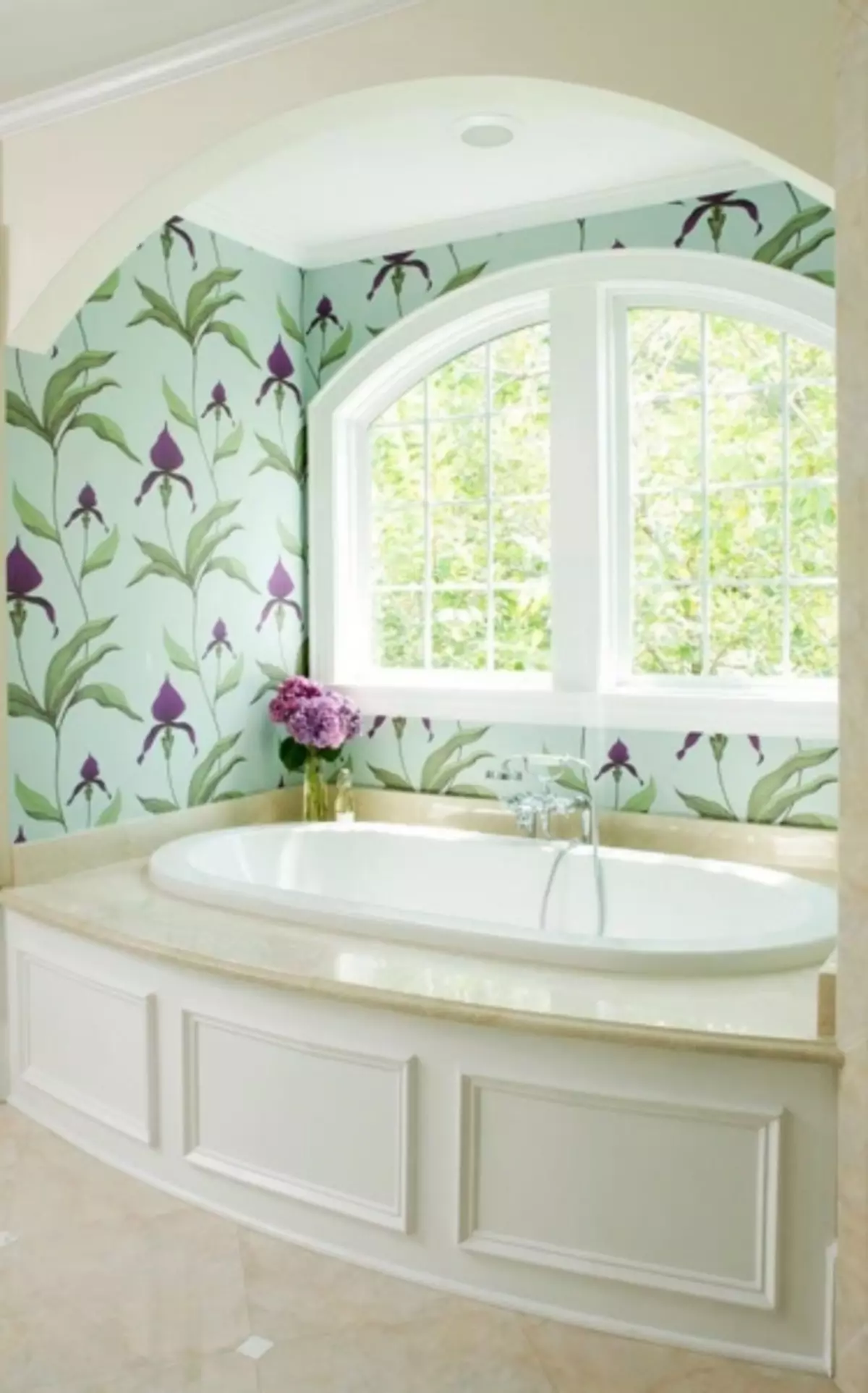
Juicy option that will suit the cheerful people! This bathroom is a wonderful combination of three colors - white and shades of fuchsia. The main colors dilute bright accessories: multicolored towels and cosmetics jars.
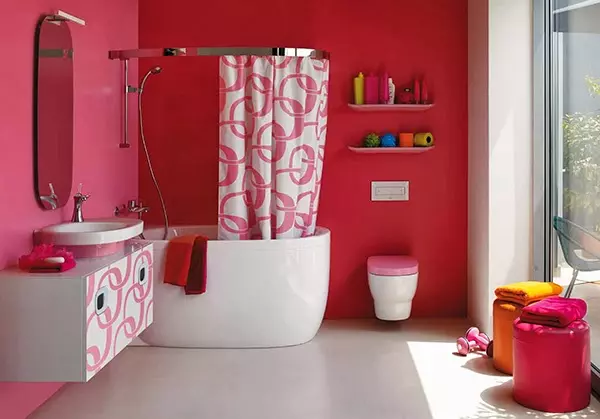
Finishing with decorative stone is another wonderful solution for the bathroom. Here the stone is perfectly combined with a tree, bamboo and rattan, which are finished with other walls, and the color scheme sets up on calm and relaxation.
